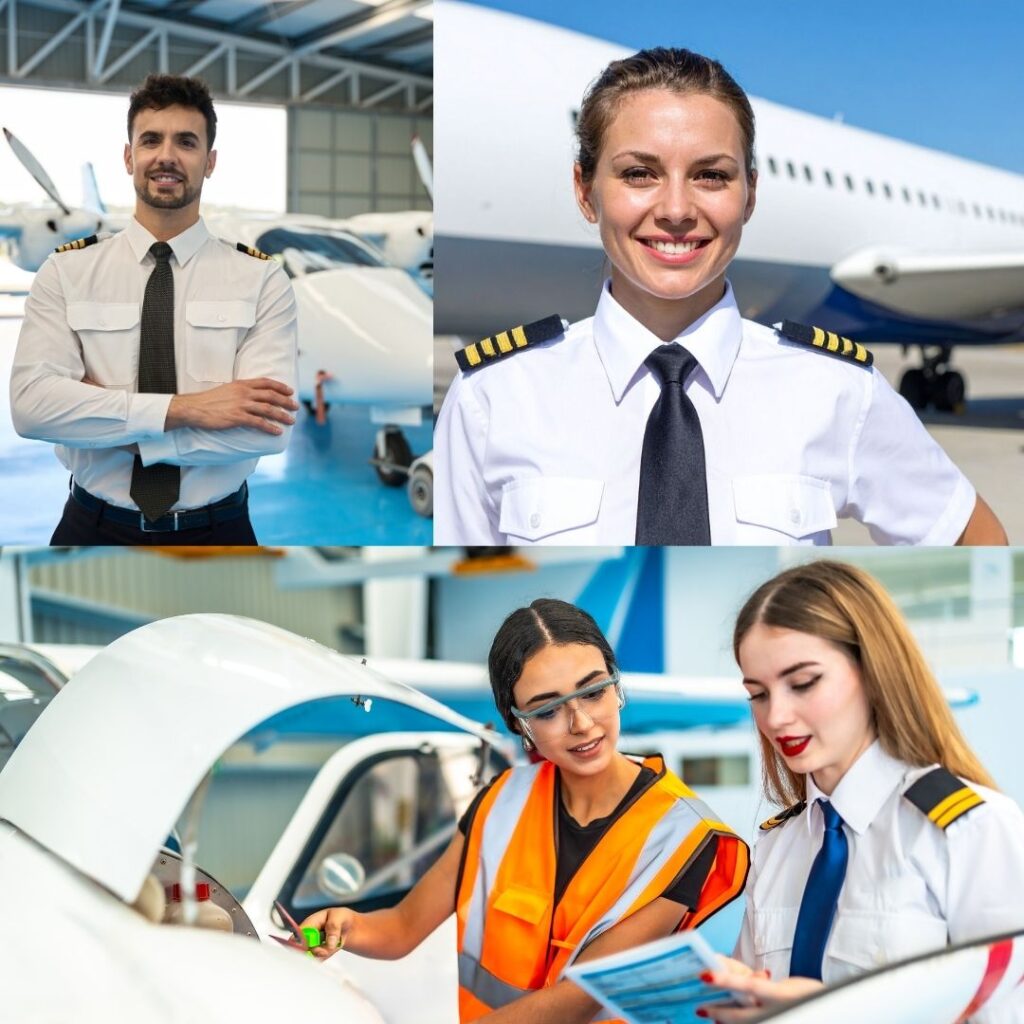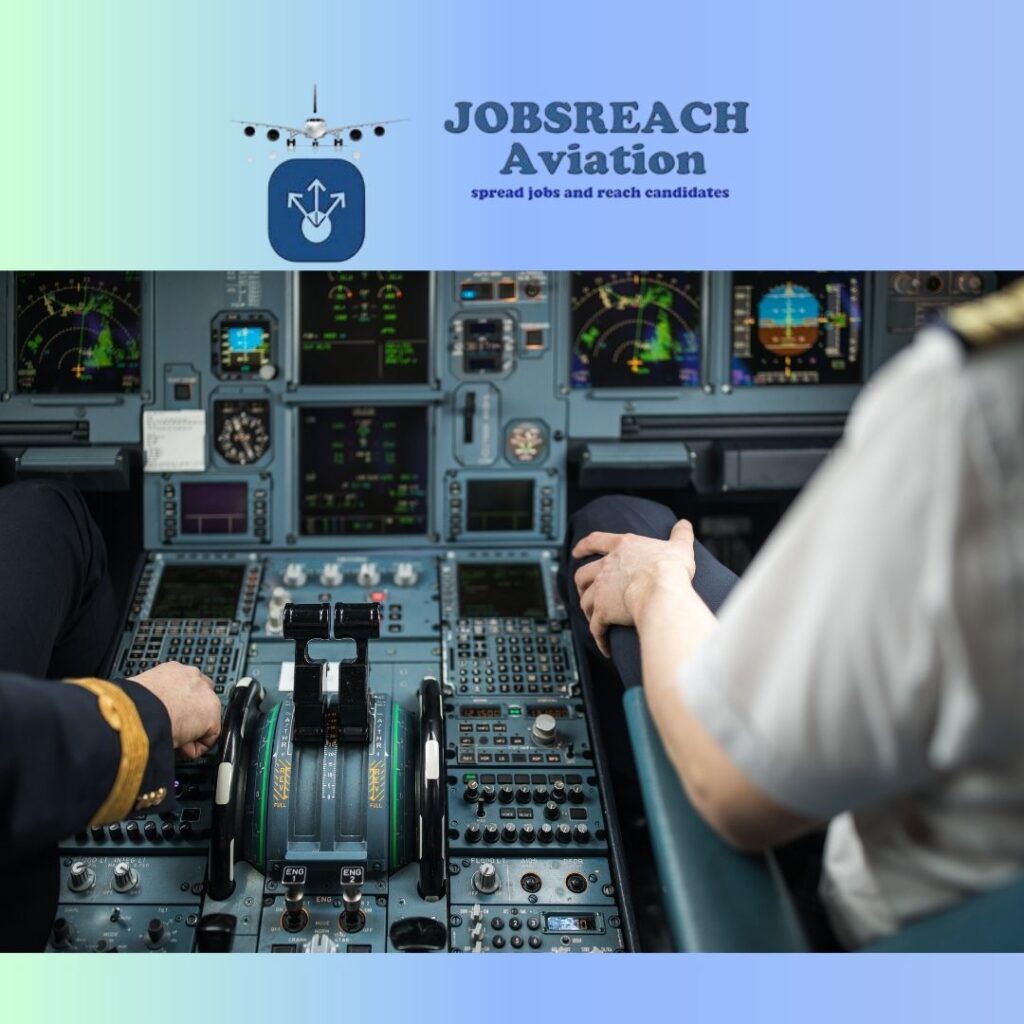The aviation industry continues to soar as one of the most dynamic and prestigious fields worldwide. Among its many career paths, becoming a pilot stands out as a journey defined by skill, discipline, and continuous growth. From flight training to commanding advanced jets, every stage of a pilot’s career represents both professional achievement and personal transformation.
In recent years, with platforms like JobsReach Aviation offering digital career advancement and networking solutions, the opportunities for pilots to progress, connect, and succeed have become broader and more accessible than ever before.

1. The Foundation: Training and Certification
Every pilot’s journey begins with rigorous training and internationally recognized certifications that ensure safety, professionalism, and regulatory compliance. The key stages include:
- Private Pilot License (PPL): The first step that allows pilots to fly privately and build essential flight hours.
- Commercial Pilot License (CPL): Enables pilots to fly professionally and receive compensation.
- Instrument Rating (IR): Permits flight in low-visibility and instrument meteorological conditions (IMC).
- Multi-Engine Rating (MER): Required for operating aircraft with more than one engine.
- Airline Transport Pilot License (ATPL): The highest level of certification that qualifies a pilot to command commercial airliners.
2. Aircraft-Specific Certifications in the Aviation Industry
After obtaining core licenses, pilots must acquire aircraft-specific certifications, often referred to as Type Ratings to operate different aircraft families. Each aircraft model has unique flight systems, cockpit layouts, and performance characteristics.
Below is an overview of common Type Ratings and certifications across various aircraft categories:
A. Airbus Aircraft Certifications
- Airbus A320 Family (A318/A319/A320/A321): Commonly used for short and medium-haul commercial routes.
- Airbus A330 / A340: Used for long-haul and international flights.
- Airbus A350 XWB: Advanced wide-body aircraft for ultra-long-haul operations.
- Airbus A380: The world’s largest passenger aircraft; requires specialized training for multi-deck operations.
B. Boeing Aircraft Certifications
- Boeing 737 NG/MAX Series: Most common type rating among commercial airline pilots.
- Boeing 747: Long-haul, wide-body aircraft known as the “Queen of the Skies.”
- Boeing 757 / 767: Mid- to long-range operations, popular for transcontinental flights.
- Boeing 777: One of the world’s leading long-haul wide-body jets.
- Boeing 787 Dreamliner: Advanced next-generation aircraft using composite materials and digital systems.
C. Regional and Turboprop Aircraft Certifications
- ATR 42 / 72: Widely used for regional routes and short-haul connectivity.
- Embraer E-Jet Series (E170 / E190 / E195): Common among regional airlines and domestic operators.
- Bombardier Dash 8 Q400: Known for short-runway and regional performance.
- Saab 340 / 2000: Popular in regional and charter services.
D. Business Jet Certifications
- Cessna Citation Series (CJ2, CJ3, XLS, Latitude, Longitude): Light to midsize business jets.
- Gulfstream G Series (G450, G550, G650, G700): Ultra-long-range corporate aircraft.
- Bombardier Challenger / Global Series: Preferred for luxury and corporate operations.
- Dassault Falcon Series (2000 / 7X / 8X): High-performance business jets with advanced avionics.
E. Cargo and Military-Converted Aircraft
- Boeing 767 / 777 Freighters: Widely used in global cargo operations.
- Airbus A330 Freighter: Efficient for medium- and long-range cargo transport.
- Lockheed Martin C-130 Hercules (Civilian Version: L-382): Multi-purpose cargo and humanitarian missions.
Each of these certifications requires a dedicated Type Rating course, consisting of:
- Ground school and systems training
- Simulator sessions specific to the aircraft model
- Base and line training with qualified examiners
- Regular proficiency checks (every 6 to 12 months)
These certifications are issued under the authority of aviation regulators such as EASA (Europe), FAA (United States), or DGCA (India), and are mandatory for commercial operations.
3. Structured Career Progression in Aviation
Once certified, pilots typically advance through a structured hierarchy:
- Junior First Officer (JFO): Entry-level pilot, assisting in flight operations and gaining experience.
- First Officer (Co-Pilot): Handles navigation and flight duties under a Captain’s supervision.
- Captain: Pilot-in-command responsible for the aircraft, passengers, and crew.
- Training Captain or Examiner: Senior pilots who train and assess others for operational readiness.
Career progression depends on flight hours, simulator performance, leadership ability, and airline requirements.
4. Continuous Learning and Technological Advancement
Modern aviation demands constant learning. With the evolution of fly-by-wire systems, digital flight management computers, and sustainable aviation fuels, pilots must undergo frequent refresher training to stay current.
Technological advancements like AI-driven flight data monitoring and next-gen cockpit automation require pilots to be adaptable and continuously proficient.
5. Beyond the Cockpit: Expanding Career Horizons
Pilots often extend their careers into related aviation roles, such as:
- Flight Operations and Safety Management
- Training and Simulation Instruction
- Corporate and Charter Aviation
- Airline Management and Compliance
These roles utilize a pilot’s expertise in leadership, precision, and operational safety, contributing to long-term career stability and diversification.

6. JobsReach Aviation: Empowering Pilots for Career Growth
In today’s connected world, JobsReach Aviation is transforming the way pilots and aviation professionals build their careers.
It’s more than a job platform, it’s a professional community designed exclusively for the aviation industry.
JobsReach Aviation offers:
- Networking Opportunities: Connect with fellow pilots, airline recruiters, and aviation companies worldwide.
- Experience Sharing: Engage with peers to exchange flight stories, best practices, and industry updates.
- Direct Job Opportunities: Access verified openings from airlines and aviation organizations without intermediaries.
- Public Profiles and Video Introductions: Create professional profiles and self-introduction videos to showcase communication skills and personality allowing employers to evaluate candidates before the interview stage.
This innovative platform empowers pilots to expand their professional visibility, build meaningful industry relationships, and fast-track their aviation careers through direct engagement with global employers.
7. The Global Outlook: Rising Demand for Pilots
According to leading aircraft manufacturers, global demand for pilots is expected to exceed 600,000 by 2040. Fleet expansion, increasing air travel, and pilot retirements are driving this surge.
This creates immense opportunity for both aspiring and experienced pilots to grow and establish themselves in a thriving global market.
8. Conclusion: A Sky Full of Possibilities
A pilot’s career is not just about flying, it’s about growth, passion, and continuous evolution. From earning initial licenses to mastering complex aircraft systems, each milestone brings a new level of achievement.
With the rise of advanced aircraft technology, global aviation expansion, and professional platforms like JobsReach Aviation, the path ahead for pilots is filled with endless opportunities.
In aviation, growth never lands, it only climbs to new altitudes.
Leave a Reply